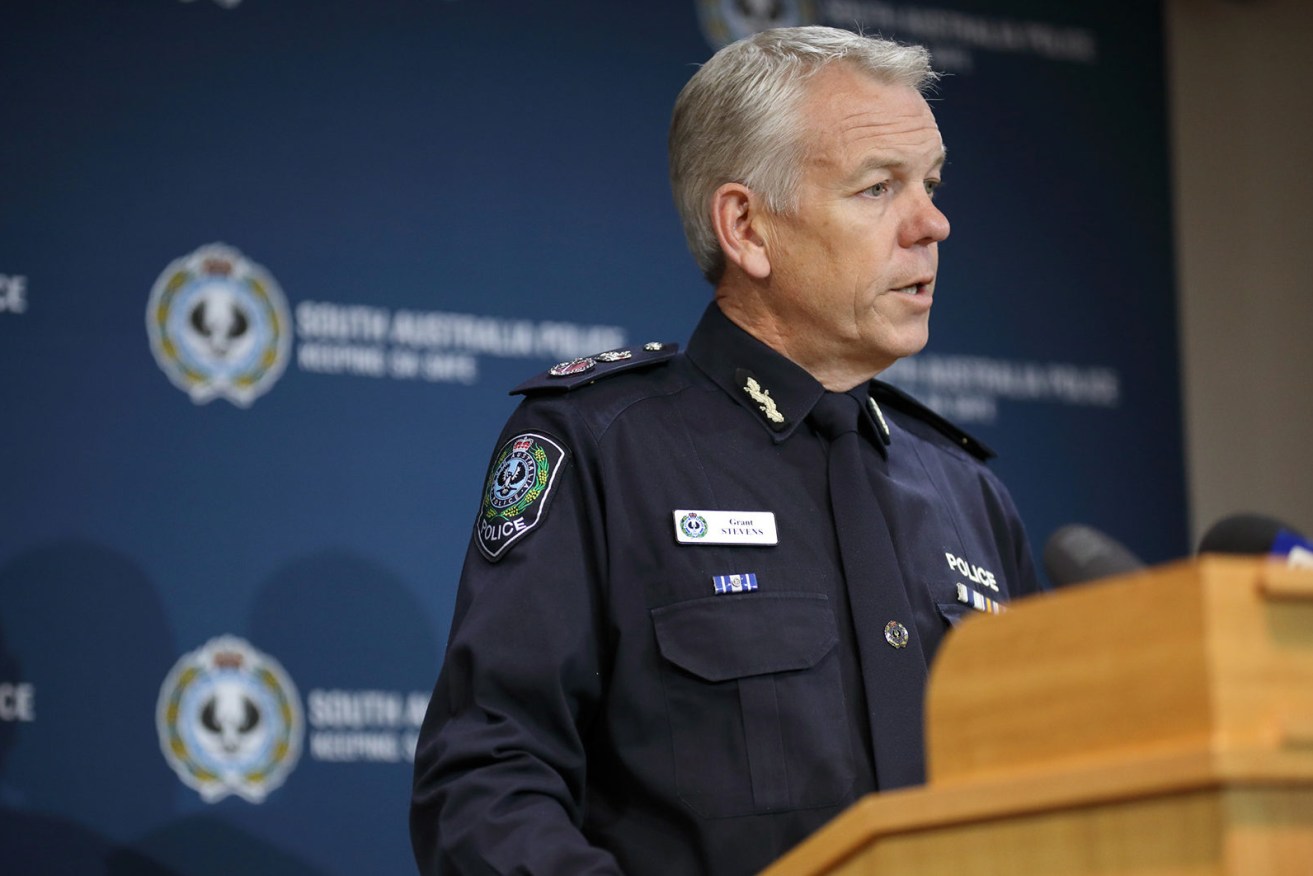SAPOL unveils ‘biggest reforms in 20 years’
SA Police will remove arbitrary geographic boundaries they say exacerbate emergency response times and establish dedicated crime prevention teams among a suite of organisational reforms announced this morning.


Grant Stevens. Photo: Tony Lewis / InDaily
Currently, general police patrols are often limited to small, defined areas; officers in adjacent areas, who may be closer to an unfolding emergency but outside the arbitrary boundary, may not be called upon to respond to it.
But in reforms Police Commissioner Grant Stevens says are “the most significant in almost 20 years”, those boundaries will be replaced with four large policing districts across metropolitan Adelaide by 2018 – Northern Adelaide, Western Adelaide, Eastern Adelaide and Southern Adelaide.
State-of-the-art audio-visual equipment will be used to keep track of police across the state and more than 850 tablet devices have been purchased to allow officers to more easily input information in the field without having to return to stations.
In addition, new technology will be rolled out to monitor police resources in real time, “qualified civilians” will be tasked with receiving triple-zero calls, more resources will be dedicated to domestic and family violence response and body-worn cameras with facial recognition capability will be rolled out to police officers next year.
Stevens said the concept of using “qualified civilians” – rather than sworn police officers – to take triple-zero calls had been “tested”, but that “we don’t envisage that we’ll step into that space until 2020”.
He said using civilians to take emergency calls would allow more police officers to work on the front line.
He said about 50 new police officers would be placed on the front line in metropolitan Adelaide as part of the State Government’s promise to recruit 313 new police officers by 2018, and more police would be dispatched to regional South Australia.
And a major restructure in SAPOL will split “response teams” – to be used exclusively for urgent emergency response functions – from “district policing teams”, charged with crime prevention activities and working with other government agencies to address the causes of crime.
District policing teams will focus on problem addresses, to which police are constantly being called, so that they can work with other agencies of government to address “underlying issues” and attempt to prevent criminal behaviour. These teams will also constitute “surge capacity” for response teams in major emergencies.
The restructure is due to be implemented by 2019.
A Police Association survey of officers earlier this year reportedly revealed that just six per cent of respondents believed the ongoing reform process within SAPOL would improve the service and the vast majority – 86 per cent – of respondents also reportedly opposed the introduction of a 50-50 gender quota within SAPOL.
Stevens acknowledged that “change comes with some challenges” but said he would push ahead with structural changes and the 50-50 gender target.
He said the reforms were nothing to do with “cost cutting” and would instead cost SA Police money, at least in the short term.
“This has never been about costs … “This is a legitimate reform to deliver a better service,” he said.
He added that “I wouldn’t [expect] any savings” and that the cost of the reforms was accounted for in SAPOL’s current budget.




